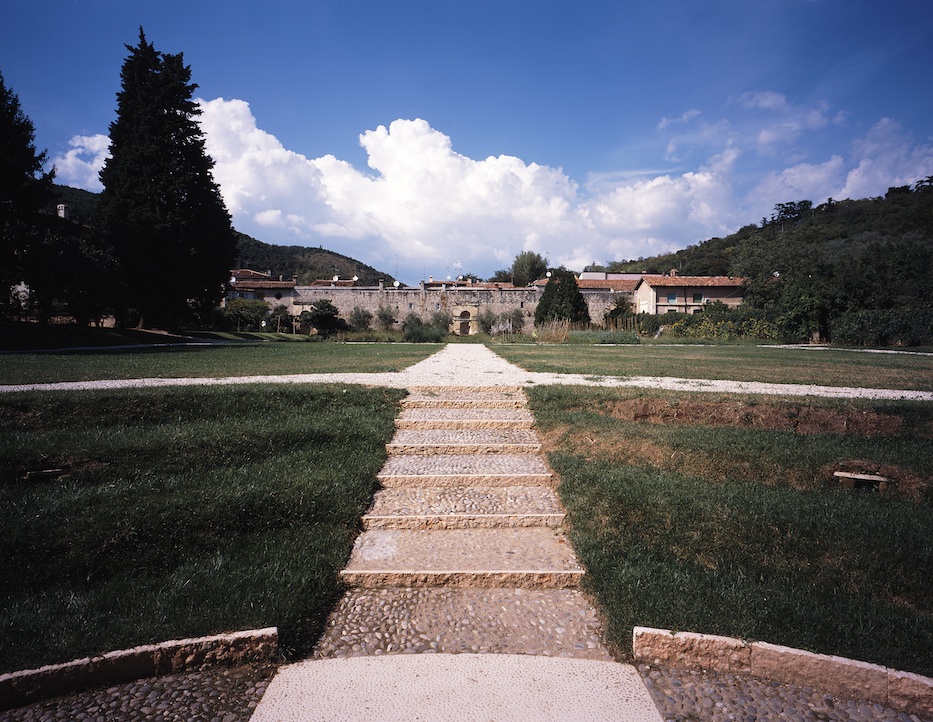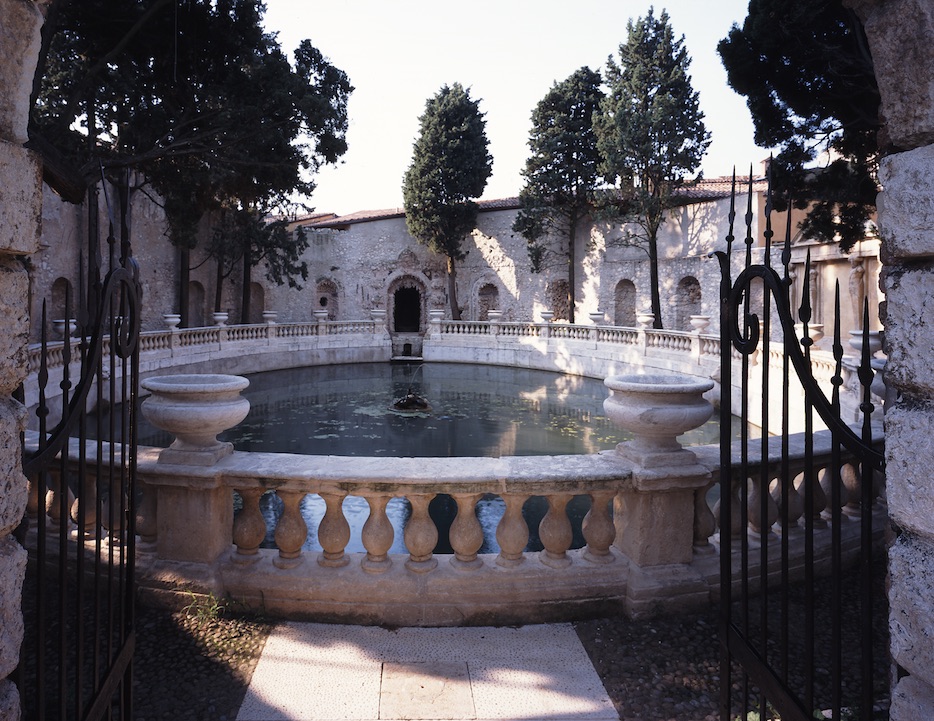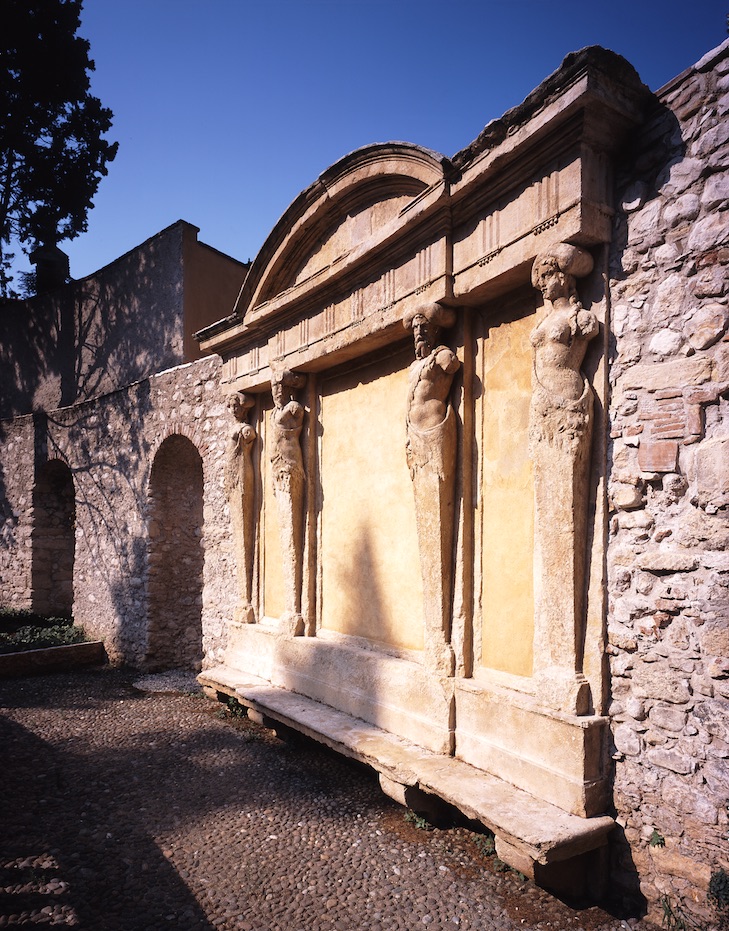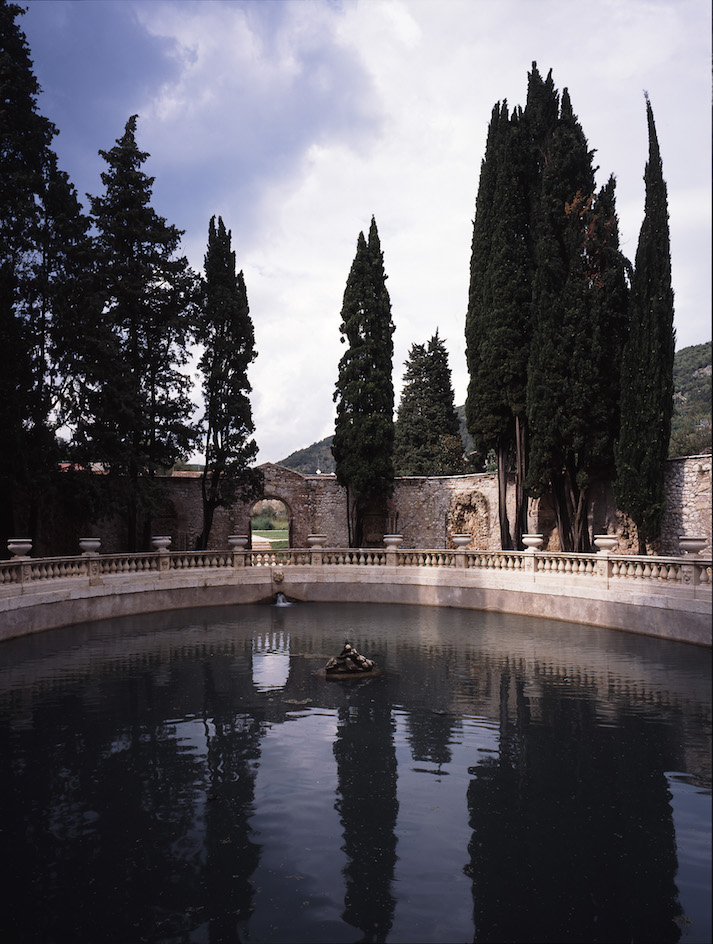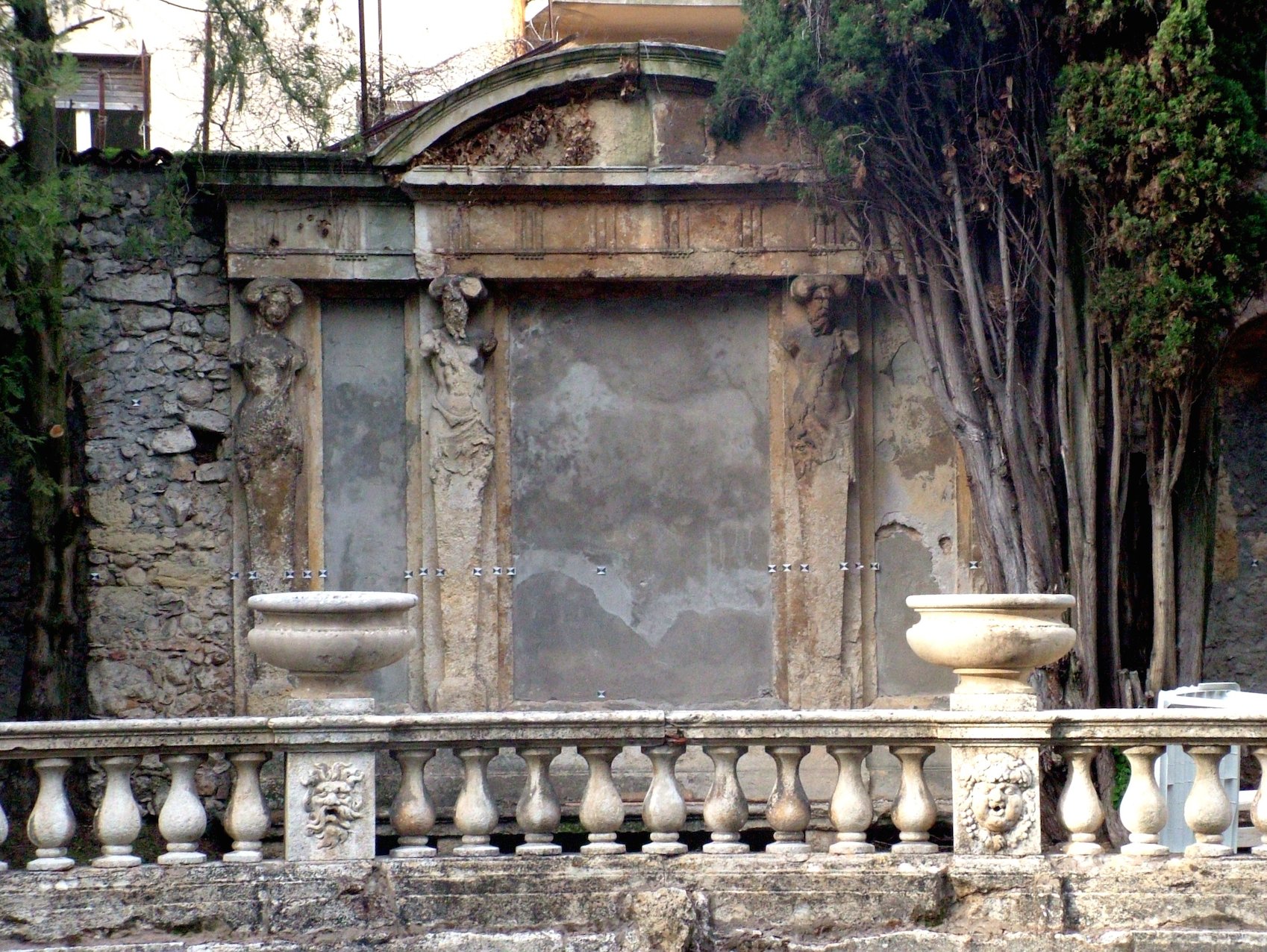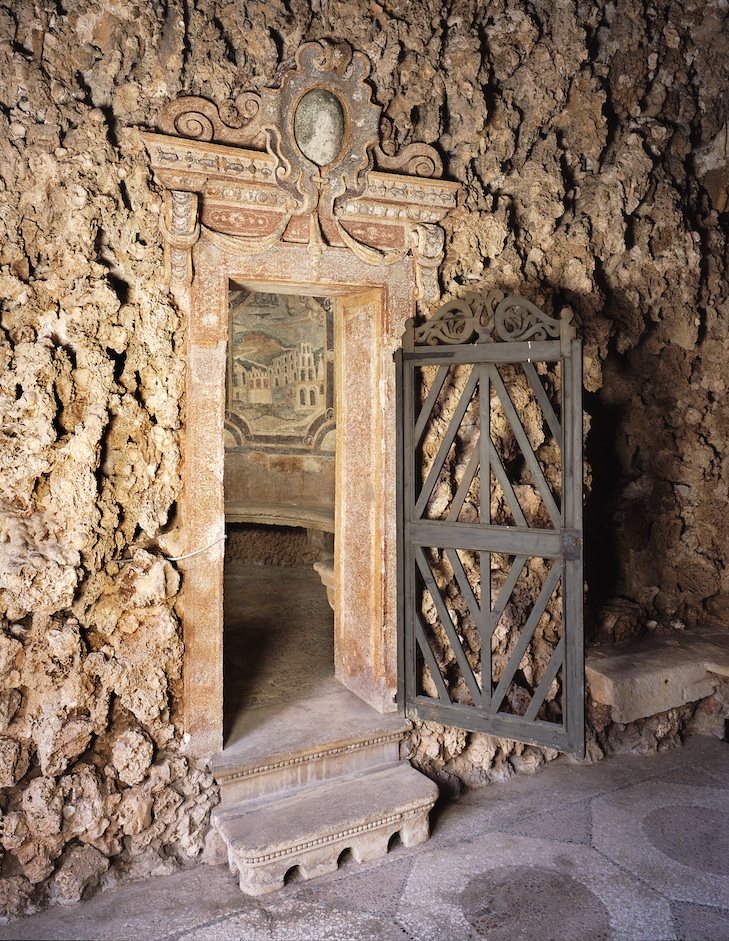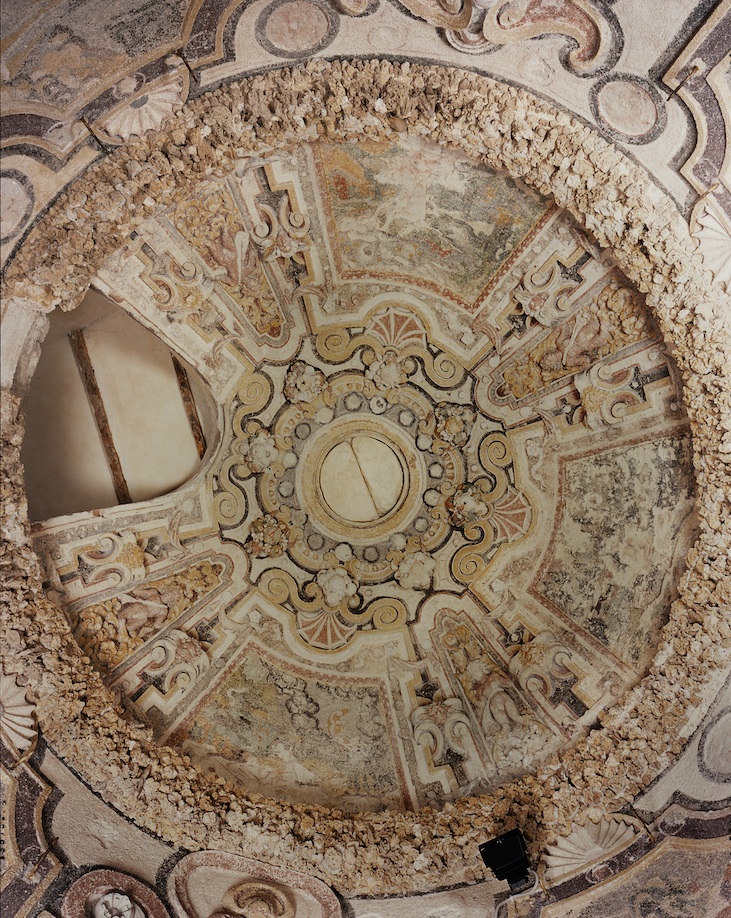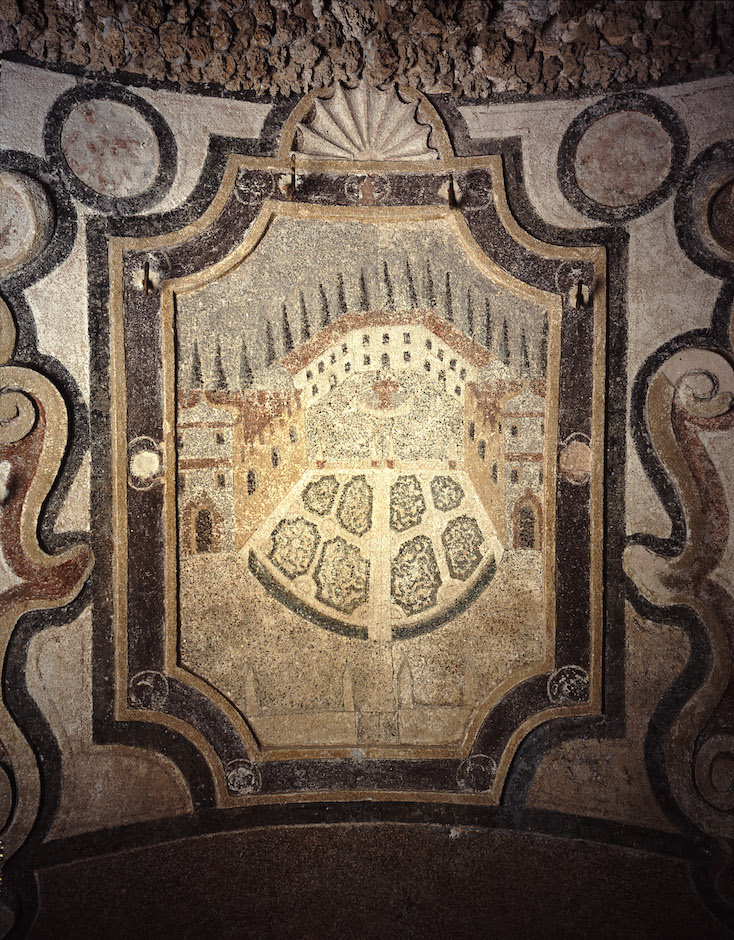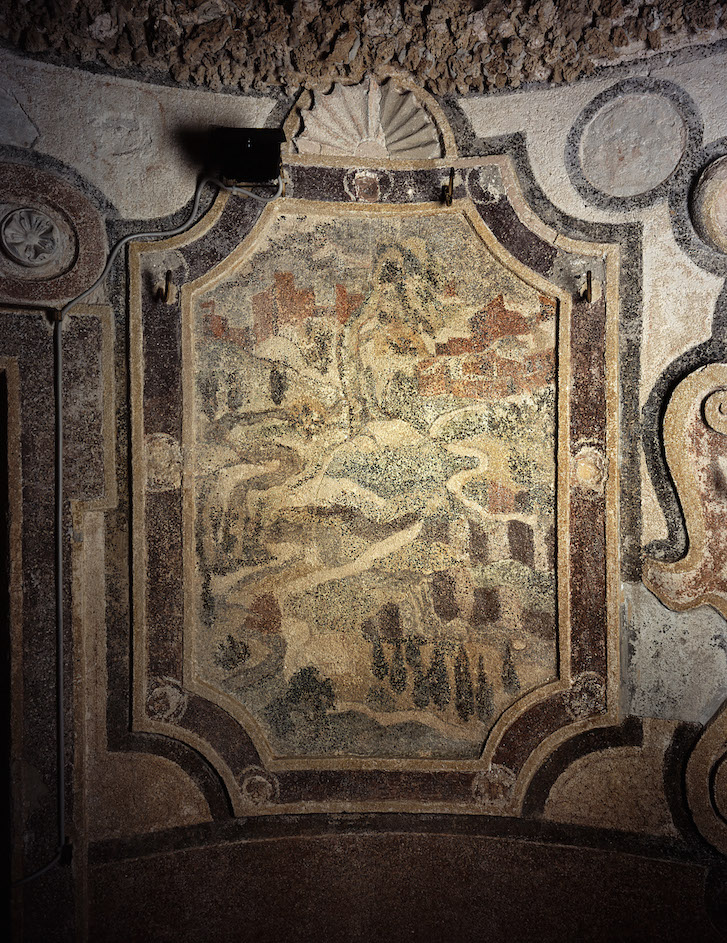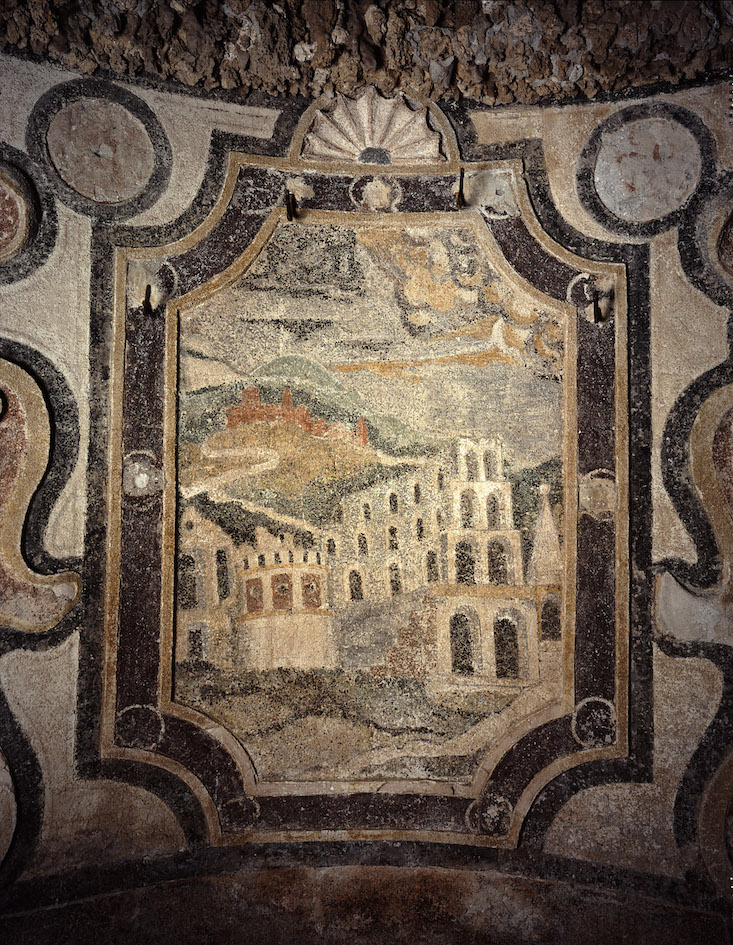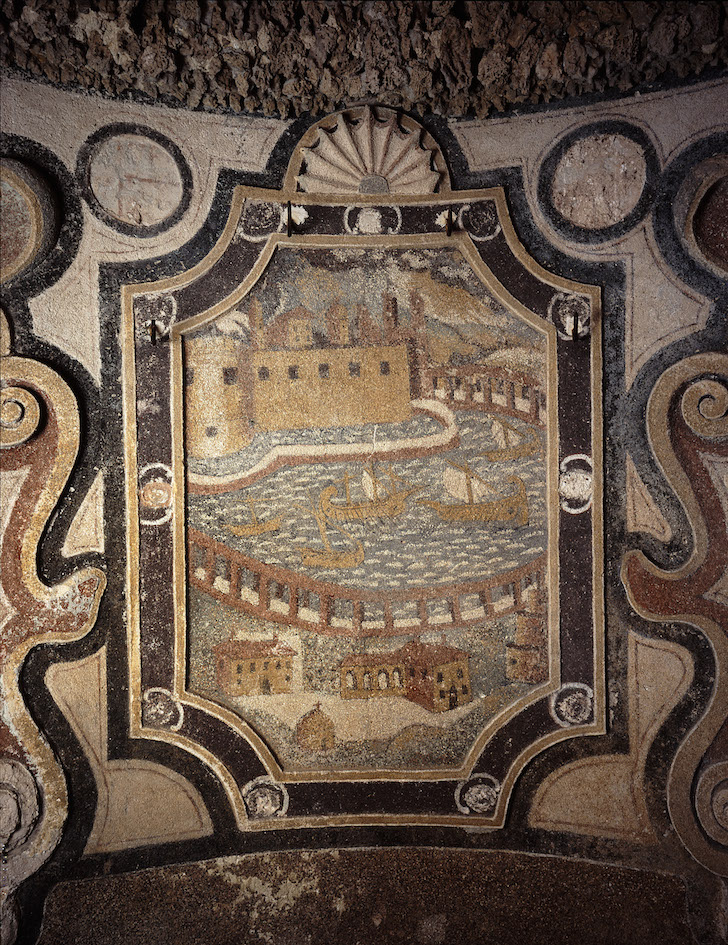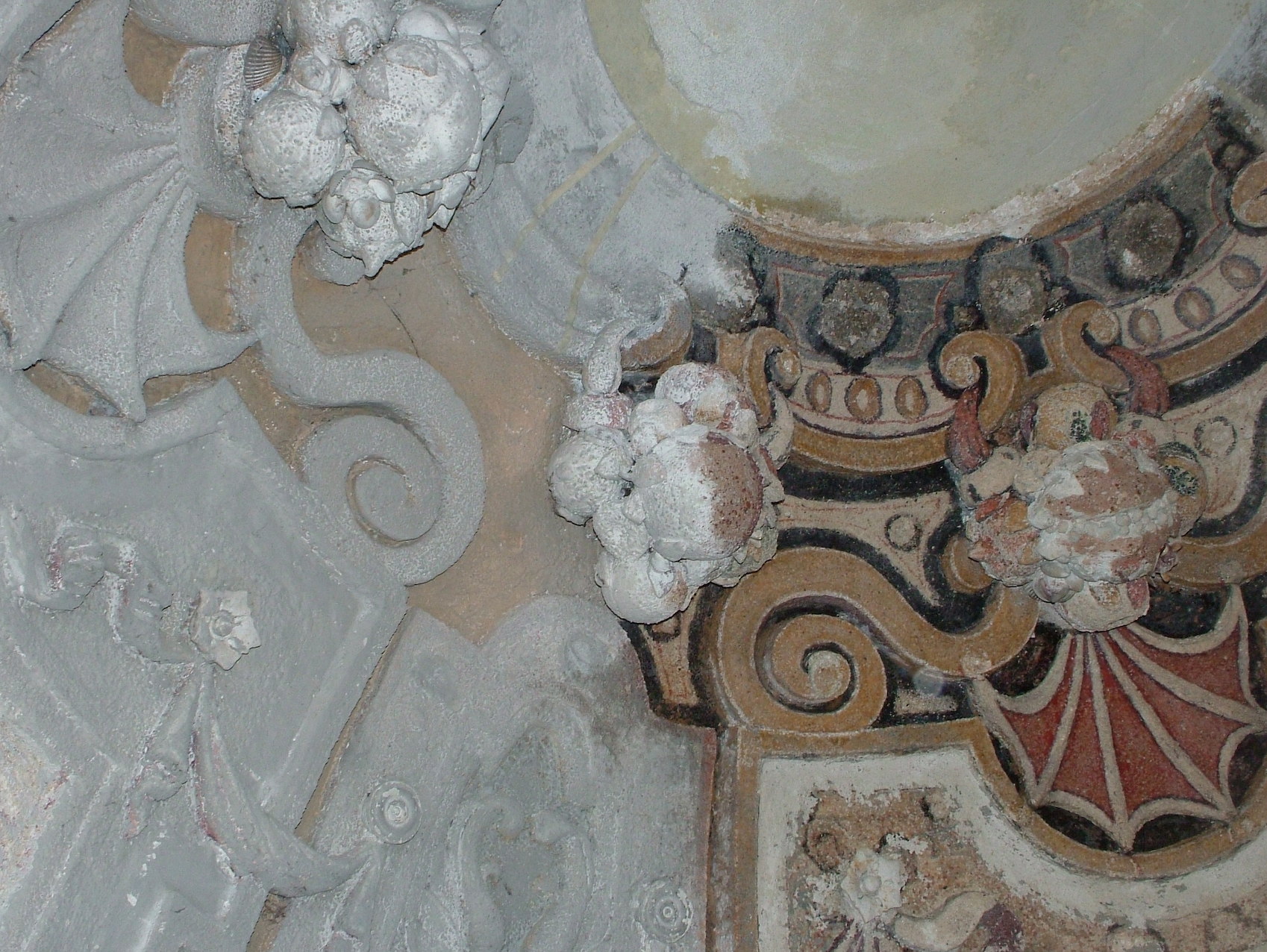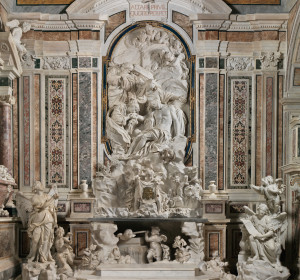Avesa (Vr), Ninfeo of Scopoli’s Villa
Date
Sunday April 2nd, 2017
DATA SHEET
SUBJECT:
Restoration of the fishmonger and of the decorative architectural elements of the external enclosure and caves
DATING:
late XVI – early XVII century
LOCATION:
Avesa (Vr), gardens of Scopoli’s villa, ex Del Bene’s Villa
CUSTOMER:
Pia Società Don Nicola Mazza
HIGH SURVEILLANCE:
Superintendence for Architectural and Landscape Heritages for the provinces of Verona, Rovigo, Vicenza – arch. Gianna Gaudini
PROJECT AND WORKS MANAGEMENT :
A.c.M.e.Studio (Verona) – arch.Giovanni Castiglioni, arch. Raffaela Braggio, arch.Genziana Frigo, arch. Filippo Legnaghi
PERIOD OF INTERVENTION :
2004-2006
THE PROBLEM
The intervention is aimed at the restoration and enhancement of an architectural and decorative work, which is very complex and articulated, a work which includes gravestone material elements, plasters and valuable masonry, as well as a valuable unknown decorative mosaic cycle, grits, shells and tartars, all elements typical of fountains and water features of the period and largely hidden until the time of the restoration of plasters and colorings of nineteenth-century taste.
There are several problems related to the abundant presence of little compatible materials, such as cement mortars, used in recent times in order to stem the advance of the degradation due to the inherent fragility of the constructive nature of the decorations and their long exposure weathering in the absence of maintenance.
THE METHOD
The main purpose of the conservative intervention, on an artifact which is so particular and complex, was to halt the degradation and recover the work as it has been received, paying attention to preserve the stratigraphic surfaces on the legibility of all interventions, ancient and recent ones, that have affected it, noting all traces which have proved the executive techniques and the changes experienced over the centuries, and becoming, therefore, a unique opportunity fundamental to the study and the historical-philological reconstruction of the object itself.
The intervention has highlighted, on almost all surfaces, both internal and external, the presence of at least three different moments of the history of the artifact. These are recognizable by three different layers of coloring and by at least three different mixtures of mortars. The intersection of these data with those from diagnostic investigations, and those deriving from historical and archival studies have led to a comprehensive historical reconstruction iter related to the Ninfeo of Scopoli’s Villa.
